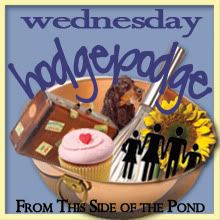Monday, September 16, 2013
Painted Ladies of Ireland
I was looking through my Ireland pictures yesterday and found some of the ones with the marked sheep. While we were there I had the chance to talk to a sheep farmer. I am glad I had my mini recorder because it was very difficult to keep up with him and even harder to translate his dialect. What I was curious about was the markings on the sheep in the pasture. Some were blue, some red, some a brownish all over color, some green. He explained to me that sheep are coloured in different ways for different things. In September(which I is when I was there the first time) you will see gimmers...I made him spell this one for me. A gimmer is a female lamb that was born in the spring and not yet bred from. They will be colored a light browny colour. It is not the color they were born with....nope....Sheep farmers actually take the little lambs and put them into a dipping tank which contains a colouring called pearl dip. My new sheep farmer friend explained that it just like a woman getting her hair tinted to make her look better. The dyed lambs are going to be sold for breeding and the farmers want the sheep to look their best. The sheep farmers also wash the faces of the sheep and trim the wool. The boy sheep, or Tups(rams), are given the same treatment for the same reason. the ones I was most interested in where the ones with the colored mark. It turns out that this is a mark of ownership, each farm will have it's own unique mark. The farmer went on to explain that his farms was a green dot on the offside rump.
This doesn't replace tagging which is a legal requirement, but if there are extra sheep in the field, the coloured mark distinguishes between the ones that belong to the farm...and the ones that don't. He went on to explainTups/rams were sometimes put into a harness at mating time. These harnesses had a coloured, waxy block in them, which leaves a mark on the ewe when mounted, this way the sheep farmers know which ewes have been mated with and which haven't. He went on to tel lme that after 3 weeks the colour of the crayon is changed, and any ewe that is re-mated gets the 2nd colour on her and that way the farmer knows she is going to be a late lamber. Sometimes no harness is used and the farmers just use a coloured paste to mark under the tups for the same reason, this process is called raddling the tups.
After talking with the farmer for almost an hour I had more information than I ever thought I needed, and more desirous than ever to spend a month in Ireland on my own. I am so into socks, brogans, long woolen skirts, and baggy sweaters. This is one of my top five bucket list things to do. I am sure that this is probably more than you wanted to know about sheep....sorry. Have a great Monday!
Subscribe to:
Post Comments (Atom)






















































No comments:
Post a Comment